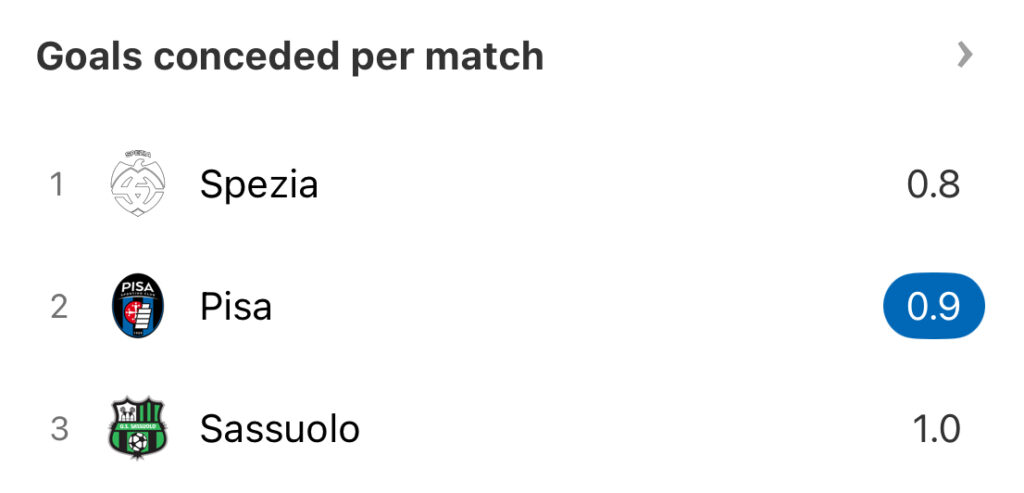With Simone Inzaghi one game away from winning the Champions League with Inter, his brother Pippo Inzaghi has guided Pisa to Serie A promotion for the first time since 1990.
The older Inzaghi, who was known for scintillating finishing ability during his playing days, hasn’t had a straightforward journey as a manager. Despite that, he has made something out of everything that has come his way – exactly what you’d expect from an expert poacher. As a result, he has acquired a reputation for helping Serie B teams reach promotion play-offs.
And as Simone continues to impress with his own Nerazzurri, Filippo is doing that with a Nerazzurri side of his own in a different division.
Pippo Inzaghi’s managerial journey
After a fruitless start to his managerial career at Milan, Inzaghi joined Venezia in Serie C. The move came right after the Lagurani had earned promotion from Serie D. Inzaghi took them directly to Serie B in his first season and in the very next season, they finished fifth in the second division, only to lose in the promotion play-off semi-finals.
The impression he made at Venezia caught the attention of Bologna, who were then trying to establish themselves in Serie A. The experience only lasted around seven months and it became clear that Inzaghi was yet to do enough to impress at the highest level.

His next step came, once again, in Serie B. Benevento had just dropped down to the second division after a stint in the top-flight during the 2017/18 campaign and were dreaming of an immediate return.
It worked out excellently, as the Giallorossi earned promotion with seven games remaining in the season. Their yo-yoing continued, though, and they were relegated just one season later with Inzaghi leaving at the end of the campaign having once again failing to make a mark in Serie A.
Brescia was the Italian’s next adventure. Owned by the chaotic Massimo Cellino, the then Serie B side sacked Inzaghi even when they were fifth in the table and well in with a chance of making it to the play-offs. It was a classic Cellino decision.
A move to crisis-ridden Reggina followed. Amidst their major financial problems, Inzaghi took them to the play-offs but was sacked due to the club’s battle with bankruptcy.
Pisa is Inzaghi’s latest achievement and considering how the Nerazzurri haven’t played in Serie A since 1990, it means something to them and their fans.
How Pisa operate under Inzaghi
Remarkably, Inzaghi has picked up a better points per game tally at Pisa than any other active manager with at least 50 games at a single club.
That speaks volumes for the impact that the former-striker is known for making. At the Tuscan side, he has stuck with a very familiar back three that usually comprises Antonio Caracciolo, Simone Canestrelli and Arturo Calabresi.
Pisa rely on a strong defensive unit, as their have had the fourth lowest average possession percentage in a 20 team division.

Inzaghi’s side are more about exploiting spaces than creating those spaces actively in possession, as they use ball-winners and runners to create their chances.
They boast the second-highest number of clearances per game, which shows that they do depend on structure and often being no-nonsense in their approach.
As a result of the stable and solid setup in the back three, Pisa have conceded the second lowest number of goals per game, only behind rivals Spezia. This doesn’t stop them from being nifty in attack, as the Nerazzurri have wing-backs like Idrissa Touré and Samuele Agnori, who add thrust from wide areas.

Stefano Moreo and Gabriele Piccinini add a decisive final ball in attack, with the duo having picked up a combined total of 13 assists across the campaign.
This supplements Alexander Lind and Matteo Tramoni, with the Italian playing off the Dane in a 3-4-2-1 setup.
All of this is an indicator of how Inzaghi’s system is making excellent use of the individual strengths of his players and that is quite like him, as he isn’t someone who imposes a higher tactical setup at clubs.
That emphasis on a solid foundation out of possession is a reason why Pisa don’t boast the most incredible numbers in attack. None of their top scorers or assisters are among the most prolific in the division because they find individual solutions while operating in a stable structure.
How does the future look for Pisa?
The central Italian side could soon find themselves on a much more stable footing in Serie A than the likes of Monza, Benevento or Spezia have in recent years.
That isn’t just because their stadium Arena Garibaldi will soon have a capacity of over 12,500 and is located right next to the iconic Leaning Tower of Pisa, but there is talk of the fact that the stadium could end up in the hands of club owner Alexander Knaster.
This can, in the longer term, add more financial stability to the club and they could, a bit like Como, market themselves an attractive destination for visiting Italian football lovers. The lack of private ownership for club stadiums has been a pertinent issue in Serie A and the Tuscans evading that problem will be a massive boost in a lot of ways.
Off-pitch matters aside, Pisa do need more Serie A experience in the team. The likes of Lind, Tramoni and Agnori offer a lot of upside, but the Nerazzurri’s main aim for next season would just be survival. It will also be an opportunity for Inzaghi to finally prove himself in the top flight and if they do end up with players that have Serie A experience, his task could get easier than it is looking right now.
(Cover image from IMAGO)
You can follow every Serie A game on FotMob – with deep stats, xG, and players ratings. Download the free app here.
